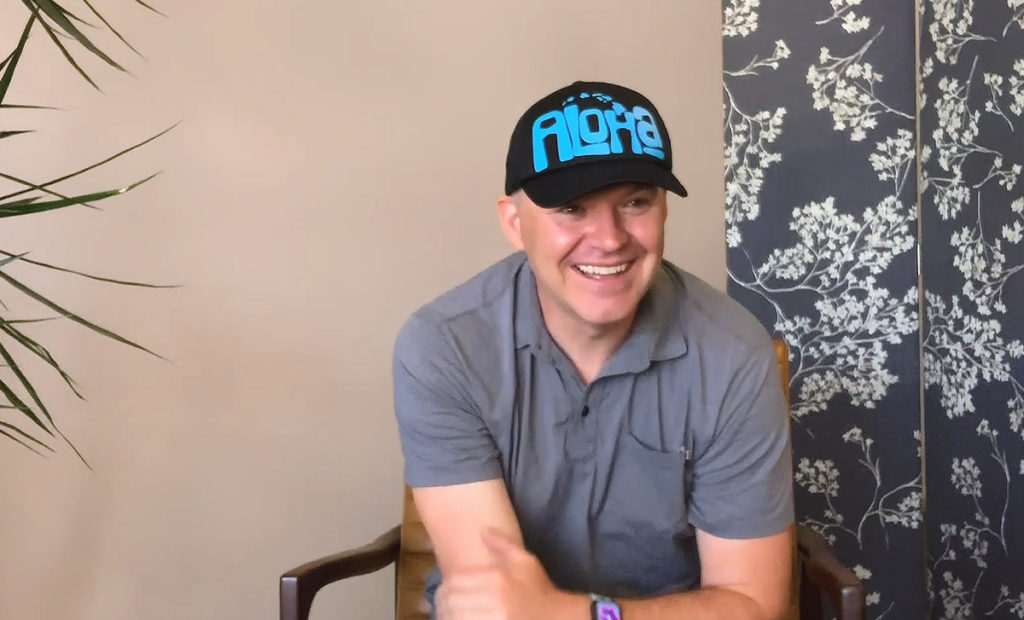“Yes, And” is a principle used in improvisational theater wherein each actor must say “Yes, And” to whatever their fellow actors say. Basically, they have to build their response on the premise that the previous actor was speaking to the truth of the scenario, no matter how fantastical the previous phrase.
It’s the only way to build the story: Validate and build.
By taking improv’s “Yes, And” technique and applying it to our relationships, we are able to improve the “play” within real-world situations to turn our romantic dramas into far more satisfying stories.
Download The Yes, And
Relationship Game
Subscribe to the newsletter to download the Yes, And Guide
and receive relationship tips from Figs and the Empathi team.
Let’s take a look at the power of “Yes, And” for couples with our favorite fictional couple, Jo and Pat.
The Lonely "No, But" Relationship Mindset…
To truly appreciate the value of a “Yes, And” mindset, let’s take a moment to live in the “No, But” relationship dynamic that many of us are more familiar with.
It’s Saturday morning, and as Jo and Pat make a nice lazy late-morning start to the weekend, Jo draws the curtains to let in the natural light.
Jo: “Ugh it's such a gorgeous day! I can’t wait to spend the weekend soaking up the sun.”
Jo looks back at Pat, who glances toward Jo and settles their eyes on their weather app.
Pat: "It’s going to rain all weekend—again."
Jo: "What do you mean? The sky is perfectly clear."
Pat: "The app says rain. If you go out without an umbrella now, you'll get soaked.”
Jo: “Last week your app said clear skies and then it rained. I’m going out.”
Pat starts to walk away.
Pat: “Well, good luck with that!"
Ouch!
You can see how quickly a nice morning together can turn into a bit of a negative cycle, even though both perspectives are warranted on a factual level.
Let’s give that another shot.
The Co-Creative "Yes, And" Mindset
Jo: “Ugh it's such a gorgeous day outside! I can’t wait to spend the weekend soaking up the sun.”<br< Pat joins Jo at the window.
Pat: "That's great! I know how you've been bummed out by the weather lately."
Jo: "Yeah."
Jo pulls their eyes from the view to smile at Pat.
Jo: "We should take advantage. What do you want to do?
Pat: “Hmm I’d actually love to go to the rooftop market?"
Jo: "That sounds great! I'll grab our shoes."
Pat: "Oh, my app says it might rain later. Could you grab an umbrella too?"
Jo: "Sure! Although getting caught in the rain could be fun."
Jo winks at Pat and leaves the room.
Pat is still smiling.
Whew! So much smoother.
In adding to each other’s stories instead of rejecting them, they were able to form a team that is prepared for any weather.
I know which relationship story I’d rather be in. How about you?
A “Yes, And” Game to Play with Your Partner
Now that you can see the effects of this mindset, you may be wondering what kind of practices can you use to achieve it?
Well, I’ve turned “Yes, And” into a game that is… game-changing 😉.
I successfully use it to teach couples in our counseling sessions how to build empathy in a non-threatening way, I’ve incorporated it into the Empathi team training, and now I’m sharing it with you!
It’s fun, something practical you can do immediately to improve your relationship, and it’s serious philosophical sh*t that works.
We offer a “Yes, And” game guide to Empathi users, but here’s the gist:
To start, one of you must make up a short scene of a fantasy story.
It must be fantasy—that’s rule #1.
Then, the other person must “Yes, And” their partner’s scene and build the next part of the story—still fantasy—that’s rule #2.
And so you go, taking turns until your tale reaches a nice peak or until you feel like you’ve had enough fun with it. The beauty of the fantasy tale is that it will be 100% non-intimidating for you both, but it will give you an understanding of how GOOD it feels to give and receive validation!
Tip: to get the most relationship value from this game, try the “No, But” version (briefly) first, so you can contrast the negation with the “Yes, And” validating mindset.
When my team and I played this game in our training session, here’s how we experienced the “No” and “Yes” versions…
“No, But” Is Harder Work That Gets You Nowhere, Slowly

“No, but” was surprisingly unenjoyable even just as a game. It was harder work to push back and resist the other person’s story. It felt fragmented. We took one step forward and one step back. By the end of it, we had no character development nor plot, and we didn’t manage to move forward or create anything.
Heck, we didn’t even feel like we were all in the same story!
Just about everybody’s part in the tale got lost along the way, so no one really felt any ownership of the story, and it was pretty lonely thinking up everything ourselves each time.
It was all in all a yucky experience of stuckness.
“Yes, And” is Easier, You Get to Go Somewhere Together, and It’s FUN!

Then, we tried the “Yes, And” perspective. Ya know what we experienced?
First, we had FUN.
We created a story of goblins, sentinels, and other weird and wonderful creatures in comical situations and made-up places.
Second, it was so much easier! It felt natural moving forward together with an easy momentum and we didn’t take ANY steps backwards at all.
Most importantly, each of us felt like co-creators in our story.
We all felt like we were in the same room and on the same team, and at the end of it, we had a lovely plot going with a well-developed family of characters.
Validating Means Dancing in the Rain AND Shine

The next time you’re with people, take a listen.
You may be sad to see how often people negate each other in daily life. I know it makes me go, “Aw look at us at it again.”
It’s really draining for everyone, and yet it is an incredibly easy habit to fall into.
The “Yes, And” game you’ve just learned is an effective way to practice validating and agreeing with your partner and breaking the bad habit of negation.
Validating your partner’s feelings as the truths that they actually are is the best place to build your co-created relationship from.
This can be one of the most difficult things for all of our couples to learn: the problem is not the problem.
The problem between you two isn’t that you disagree about the rain, it’s that you feel alone with your concerns.
“Yes, And” is so effective as a tool because it shows people that another way is possible.
You can validate that your partner wants to enjoy the sunshine even if you think it will rain. You can validate that your partner is afraid it will rain even if you think it’s unlikely.
Either way, if you’re together, you won’t be fighting about who’s the better weatherman. You’ll enjoy the rain and/or shine together!
Co-create A Story Where You Both Make Sense

One last thought on this: “Yes, And” in relationships isn’t a hack about surface-level speaking rules. Impact matters. So please don’t use this to try to justify your own version of the story, use it to create a new story together in which you both make sense and in which you both matter.
You always make sense. So does your partner.
You don’t have to stick to old habits that don’t work anymore. Your life together is yours to write and rewrite as you go along.
So just say “yes,” and have fun doing it!
And remember, we’re here if you need a counselor to help you along the way.


